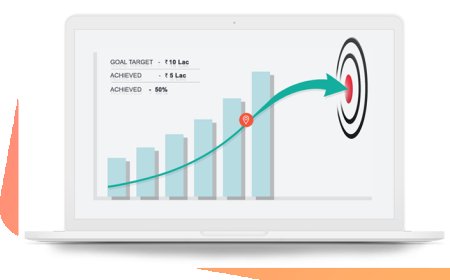Understanding Student Loan Interest Rates in India: What Every Borrower Should Know
Planning to study with a student loan in India? Learn about student loan interest rates, how they’re calculated, and smart tips to manage your repayment.

Education has become one of the most valuable assets in todays competitive world. Whether its an undergraduate degree in engineering or a masters program abroad, higher education can open doors to better career opportunities. But with the rising cost of tuition, accommodation, and other expenses, many students turn to education loans to bridge the gap. If youre considering a student loan in India, one of the most important aspects to understand is the student loan interest rates.
This article breaks down how interest rates work, what factors influence them, and how to manage your student loan effectively so that your academic journey doesnt become a financial burden later on.
What Is a Student Loan?
A student loan is a type of financial aid that helps students and their families pay for post-secondary education. In India, student loans can be used to cover tuition fees, hostel charges, examination fees, travel expenses (for international education), and even the cost of laptops or books.
While applying for a student loan in India, borrowers often overlook how much they will actually repay. Thats where student loan interest rates come in.
Understanding Student Loan Interest Rates
The interest rate on a student loan is the extra percentage charged by the lender over and above the principal amount borrowed. It is essentially the cost of borrowing money.
Student loan interest rates can be of two types:
-
Fixed Rate: The interest rate remains the same throughout the tenure.
-
Floating Rate: The interest rate fluctuates with market conditions, often linked to external benchmarks like the Repo rate.
In India, most student loans come with floating interest rates, which means they may rise or fall over time depending on the financial market.
How Interest is Calculated on Student Loans
Most lenders calculate interest on a simple interest basis during the moratorium period (the course duration plus 612 months), after which compound interest is charged on the outstanding loan amount.
For example, if you borrow ?10 lakhs at an annual simple interest rate of 10% during a 2-year course and a 6-month moratorium period, the interest accrued would be:
?10,00,000 10% 2.5 = ?2,50,000
This ?2.5 lakhs is then added to your principal when the EMIs begin, unless you choose to pay it off during the moratorium.
Factors That Affect Student Loan Interest Rates
-
Type of Course and Institution
-
Loans for professional or technical courses often have slightly lower interest rates.
-
Premier institutions may also be eligible for special rates.
Loan Amount
-
Higher loan amounts may attract higher rates unless secured with collateral.
Collateral and Co-applicant
-
Secured loans (with collateral) generally come with lower interest rates.
-
A co-applicant with a strong financial profile can also help reduce the rate.
Credit Score
-
Though students may not have a credit history, the creditworthiness of the co-applicant matters significantly.
Repayment Tenure
-
Longer tenures might reduce monthly EMIs but can increase the total interest paid.
Average Student Loan Interest Rates in India
While rates vary across lenders and profiles, the average student loan interest rates in India typically fall between 8% to 14% per annum. Special schemes for female students or economically weaker sections may offer slightly lower rates.
Moratorium Period: A Crucial Relief
One of the key benefits of taking a student loan in India is the moratorium period, which gives students breathing room to complete their studies and find employment before starting repayments.
During this period:
-
Some banks offer a full interest waiver (rare).
-
Others expect simple interest payments.
-
Most add the interest to the principal at the end of the moratorium.
Its wise to pay off interest during this period if possible to reduce the overall repayment burden.
Repayment Terms and Planning
After the moratorium period, youll begin paying EMIs. Heres how to plan it smartly:
-
Use an EMI Calculator: This helps you understand your monthly obligation and total interest payout.
-
Start Small: Some lenders allow step-up EMIs where you start with a lower EMI and gradually increase it.
-
Prepayment: Check if there are prepayment charges. Paying off early can save a lot on interest.
Tips to Get the Best Student Loan in India
-
Compare Options: Dont go with the first offer. Use online platforms to compare rates and terms.
-
Negotiate Terms: You may negotiate better terms if you or your co-applicant have a strong financial background.
-
Look for Subsidy Schemes: Government-backed schemes like the Central Sector Interest Subsidy (CSIS) can ease the repayment burden.
-
Avoid Over-Borrowing: Only borrow what is absolutely necessary. Remember, youll have to repay it with interest.
Tax Benefits on Student Loans
Under Section 80E of the Income Tax Act, the interest paid on a student loan is fully deductible from your taxable income for up to 8 years. This makes student loans a financially smart option, especially when compared to personal loans.
Final Thoughts
Choosing a student loan in India is a major financial decision that should not be taken lightly. While loans can open the door to quality education and career advancement, the student loan interest rates can significantly impact your financial future.
Do your homework, compare your options, and plan your repayments strategically. A well-managed student loan can not only fund your dreams but also build a strong credit history that helps you later when applying for a car loan, credit card, or even a home loan.






































